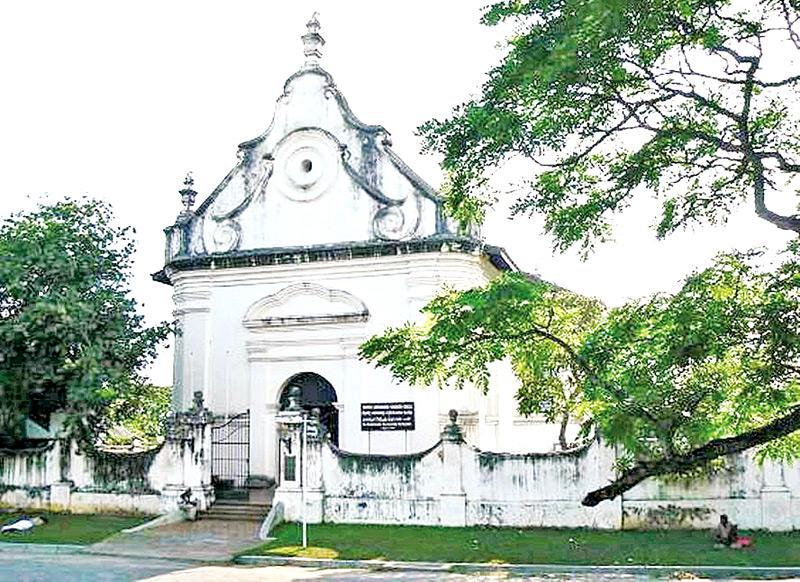
The Bay of Galle was an active commercial hub for many centuries. It attracted European and Arab trading vessels that gave rise to an important harbour. The earliest records of this bay can be traced to an ancient map of Ptolemy. The Portuguese arrived here in 1505 and by 1589 Viceroy Mathias set up a Fort.


The pioneering Franciscan missionaries set up a chapel with a monastery called Misericordia. The Capuchin Order (of the Franciscans) is said to have established a convent on a hill, the highest point within the growing harbour. By 1640 the Dutch realized the commercial significance of this port and laid siege. The Dutch gained control and installed Willem Coster as the first Governor of Zeylan (Ceylon). Coster had first sailed to Trincomalee with three ships and helped Admiral Adam Westerwold to assault the Portuguese Fort in Batticaloa.
 The successful Dutch troops later attacked Galle and subdued the Portuguese. The Fort was initially named Akersloot after the birthplace of Coster, but the name did not become officially recorded. The victorious Dutch are said to have had a thanksgiving service on the hill conducted by Nicholas Molinaeus.
The successful Dutch troops later attacked Galle and subdued the Portuguese. The Fort was initially named Akersloot after the birthplace of Coster, but the name did not become officially recorded. The victorious Dutch are said to have had a thanksgiving service on the hill conducted by Nicholas Molinaeus.

By 1642 the Dutch built a small church near the clock tower (adjacent to the wall of the Fort). However, by 1701 they decided to relocate to the inner area of the formidable Fort and selected a bare land adjacent to the old Capuchin convent. The belfry of the church can be seen on the corner of Queen’s Street. It is believed that in 1682 plans were made to build a Dutch church here but the project was delayed due to lack of funds. The military commander Caspurus de Jong and his wife had made a donation to begin the project, as they celebrated the birth of their baby daughter.
By 1755 the present day church was finally completed. It was built in Doric style of architecture, similar to the massive Wolvendaal Church they built in Colombo. By the 18th century the Dutch Reformed Church had an astounding congregation of 53,000 in Colombo and 200,000 in Jaffna. Other beautiful Dutch churches can be seen at Maligakande, Kohuwela, Bambalapitiya, Wellawatte, Regent Street (Colombo 10) and Dehiwela. Outside Colombo their large churches are in Matara and Kalpitiya with the once magnificent Dutch church inside the Jaffna Fort now laying in total ruin.
Thankfully, the beautiful Dutch church inside Galle Fort has been fully restored to her pristine glory. The resident priest is Rev. Lakmal Wijeratne. The Groote Kirk (Dutch church) is located on Church Street, with large trees offering shade. Some believe these trees are about two centuries old and deeply rooted in the history of this awe inspiring Fort. The outer façade painted in white reflected the noon day sun. In the ancient map of Galle Fort, this church is marked as Groote Kirk by Valentyn - meaning large church.
The moment you step into this sanctuary it is like walking back in time. The first thing that struck me was the granite slabs neatly embedded in the floor, which were actually tombstones from the past. Buried inside were Dutch governors, military commanders and powerful administrators. The emblems and inscriptions were still clear after almost 300 years. The Dutch Reformed Church did not focus much on elaborate main altars but gave priority to the pulpit. Rev. Wijeratne pointed out the calamander wood had been used to build the pulpit which had a large wooden canopy above it. The church resonated with the design of one solid structure. On the left side wall was a pipe organ installed in 1870. The choir loft was designed to be in the small balcony, which can be entered by climbing a flight of wooden steps. As we gazed up at the ceiling, we realized that the original ceiling was painted in blue with golden stars. Today the stars are absent but the bright blue reminds the believer of the glorious realm of Christ’s abode in the heavens.
The light shades are another unique feature of the Dutch era, suspended from the high ceiling with metal chains. The stained glass windows were installed in 1830 and the restored coloured squares in the windows glowed like tiny gems in the radiant sunlight.
Along the right side wall was a row of high wooden pews - reserved seats for the ruling Governor, deacons of the church and military commanders. Small wooden chairs used for Sunday School could still be seen in this church.
The faithful church keeper Sudath maintains the church in peak condition. He points at a grave marked 1662, the oldest grave inside this church. We walked outside via the side door on the right and stepped into a small garden.
There were two tunnel entrances, the gates of which were locked. Where did these ancient tunnels lead to? These are actually ancient burial vaults. One had been opened in 1925. Right along the wall were many other gravestones neatly arranged in the upright position.
Once the seat of the Dutch Governor was transferred to Colombo, the Galle Fort lost its significance and so did this church. It is recorded that the last Dutch Commander here was Deidrich Thomas Fretz, who surrendered this Fort to the British. The British were tolerant and allowed the church to continue its worship activities. This glorious edifice remains as a wonderful testament to the Dutch Reformed Church in Sri Lanka.
